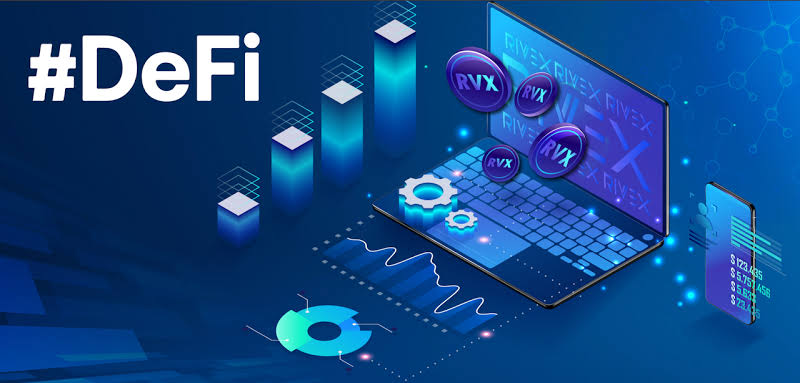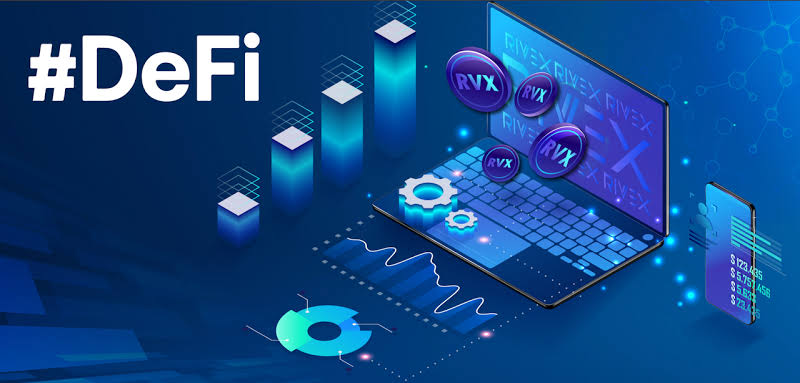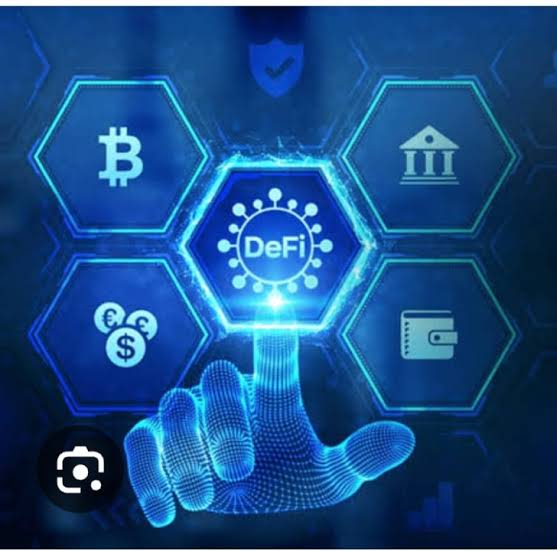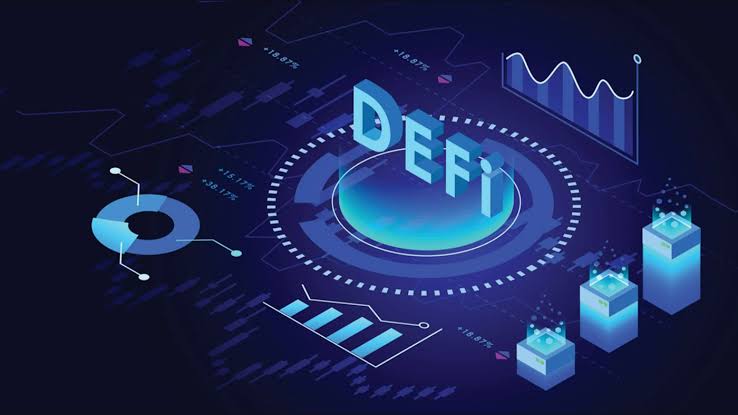The Rise of DeFi (Decentralized Finance)
Decentralized Finance, commonly known as DeFi, has emerged as one of the most transformative innovations in the cryptocurrency space.
By leveraging blockchain technology, DeFi aims to create a more open, transparent, and accessible financial system.
This article explores the rise of DeFi, its core components, benefits, challenges, and potential future impact on the traditional financial system.
What is DeFi?
DeFi refers to a broad category of financial applications built on blockchain networks, primarily Ethereum.
Unlike traditional financial systems, which rely on intermediaries like banks and brokers, DeFi platforms operate without centralized control.
Instead, they use smart contracts—self-executing contracts with the terms of the agreement directly written into code—to automate and facilitate transactions.
Core Components of DeFi
- Decentralized Exchanges (DEXs)
Decentralized exchanges enable users to trade cryptocurrencies directly with each other without the need for an intermediary. Popular DEXs like Uniswap and SushiSwap use automated market-making (AMM) algorithms to provide liquidity and determine prices. Users can trade, provide liquidity, and earn fees, all while maintaining control over their funds. - Lending and Borrowing Platforms
DeFi lending platforms like Aave, Compound, and MakerDAO allow users to lend their assets to others in exchange for interest. Borrowers can use their crypto holdings as collateral to secure loans. These platforms use smart contracts to manage and automate the lending process, eliminating the need for traditional credit checks and intermediaries. - Stablecoins
Stablecoins are cryptocurrencies pegged to the value of a fiat currency, such as the US dollar. They provide stability and a reliable store of value in the volatile crypto market. Examples include Tether (USDT), USD Coin (USDC), and Dai (DAI). Stablecoins play a crucial role in DeFi, enabling users to trade, lend, and borrow without the risk of significant price fluctuations. - Yield Farming and Liquidity Mining
Yield farming involves providing liquidity to DeFi protocols in exchange for rewards, typically in the form of additional tokens. Liquidity mining is a similar concept where users earn tokens for contributing liquidity to a platform. These practices have gained popularity as a way for users to earn passive income from their crypto holdings.
Benefits of DeFi
- Accessibility
DeFi platforms are accessible to anyone with an internet connection and a crypto wallet. This inclusivity empowers individuals who are unbanked or underserved by traditional financial institutions to participate in the global economy. DeFi removes barriers such as credit checks and geographic restrictions, democratizing access to financial services. - Transparency and Security
All transactions on DeFi platforms are recorded on public blockchains, providing a high level of transparency. Users can verify transactions, audit code, and track the flow of funds. Additionally, the use of smart contracts reduces the risk of human error and fraud, as transactions are automated and executed exactly as programmed. - Control and Ownership
In the DeFi ecosystem, users retain full control and ownership of their assets. Unlike traditional financial systems where funds are held and managed by intermediaries, DeFi users manage their funds through non-custodial wallets. This reduces the risk of asset seizure or mismanagement by third parties. - Innovation and Flexibility
DeFi fosters a culture of innovation, with developers constantly creating new financial products and services. This rapid pace of development has led to the emergence of innovative concepts such as flash loans, decentralized insurance, and synthetic assets. The flexibility of DeFi allows for the creation of custom financial solutions tailored to specific needs.
Challenges and Risks
- Regulatory Uncertainty
The regulatory landscape for DeFi is still evolving. As DeFi platforms operate outside traditional financial regulations, they face potential scrutiny from regulators concerned about issues such as money laundering, fraud, and consumer protection. Clear regulatory guidelines are needed to ensure the sustainable growth of the DeFi ecosystem. - Smart Contract Vulnerabilities
While smart contracts automate transactions and reduce the risk of human error, they are not immune to vulnerabilities. Bugs and exploits in smart contract code can lead to significant financial losses. High-profile incidents, such as the DAO hack in 2016 and the more recent Poly Network hack, underscore the importance of thorough code audits and security measures. - Scalability Issues
Most DeFi platforms are built on the Ethereum blockchain, which has faced scalability challenges due to high demand. Network congestion can lead to slow transaction times and high gas fees, making it expensive for users to interact with DeFi applications. Solutions such as Ethereum 2.0 and layer-2 scaling solutions are being developed to address these issues. - User Experience and Education
The complexity of DeFi platforms can be a barrier to entry for new users. Navigating decentralized exchanges, managing private keys, and understanding yield farming mechanics require a certain level of technical knowledge. Improving user experience and providing educational resources are crucial for broader adoption.
The Future of DeFi
The rise of DeFi has the potential to significantly impact the traditional financial system.
As the ecosystem matures, several trends and developments are likely to shape its future.
- Integration with Traditional Finance
DeFi is increasingly being integrated with traditional financial systems, bridging the gap between the old and new. Partnerships between DeFi platforms and traditional financial institutions can provide greater liquidity, regulatory compliance, and mainstream adoption. Hybrid solutions that combine the benefits of both systems may emerge. - Expansion to Other Blockchains
While Ethereum has been the primary blockchain for DeFi, other blockchains are emerging as viable alternatives. Platforms like Binance Smart Chain, Solana, and Polkadot offer faster transaction times and lower fees, attracting DeFi projects and users. This multi-chain ecosystem can reduce congestion on Ethereum and foster innovation across different blockchains. - Enhanced Security Measures
Improving security is paramount for the long-term success of DeFi. As the ecosystem grows, there will be a greater emphasis on security audits, bug bounties, and insurance solutions to protect users’ funds. Collaboration between developers, security experts, and auditors can help build more robust and secure DeFi platforms. - Regulatory Clarity and Compliance
Regulatory clarity will be a key factor in the future growth of DeFi. Clear and consistent regulations can provide legitimacy and attract institutional investors. DeFi projects that prioritize compliance and work closely with regulators are likely to thrive in the evolving regulatory landscape
Conclusion
The rise of DeFi represents a paradigm shift in the financial industry, offering a more inclusive, transparent, and innovative alternative to traditional finance.
Despite the challenges and risks, the potential benefits of DeFi are immense, from democratizing access to financial services to fostering innovation and financial inclusion.
As the DeFi ecosystem continues to evolve, it will be crucial to address regulatory, security, and scalability issues to ensure sustainable growth and mainstream adoption.
By staying informed and engaged with developments in the DeFi space, individuals and businesses can navigate the opportunities and challenges in this dynamic and rapidly changing field.
The future of finance is decentralized, and DeFi is at the forefront of this transformative movement.






